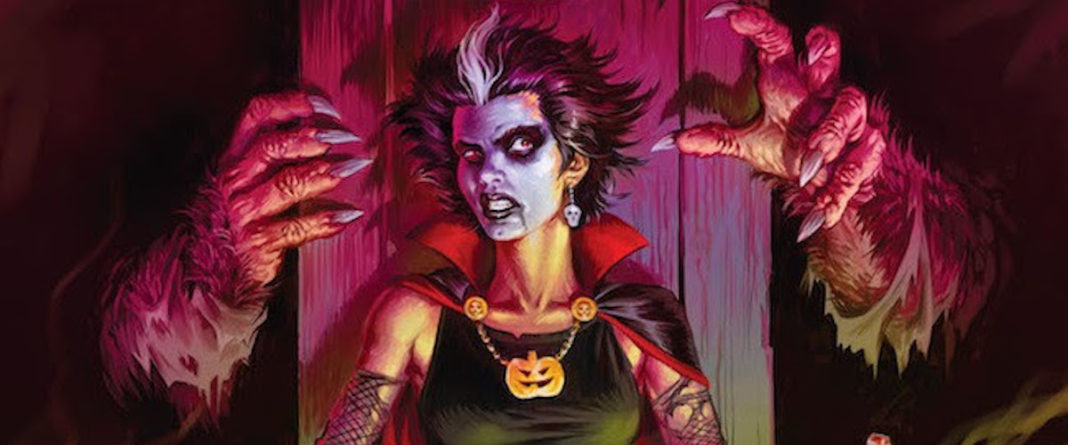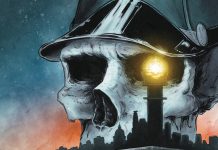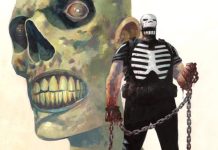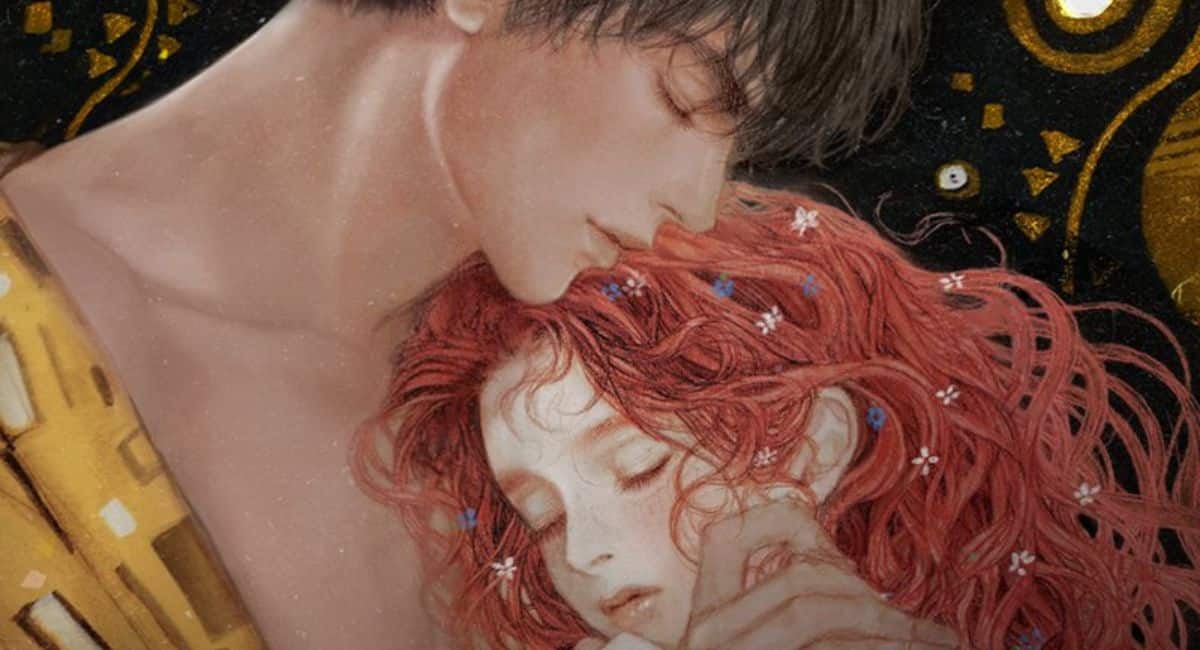On Saturday at Rose City Comic Con, cartoonist Phillip Sevy, colorist Kelly Fitzpatrick, actor and writer David Dastmalchian, and artists Andy and Veronica Fish spoke on the “Peeling Back the Layers: The Process of Bringing a Comic to Life” panel, where they discussed their individual processes and how they work with collaborators on projects for Dark Horse, Archie, Image, and more.
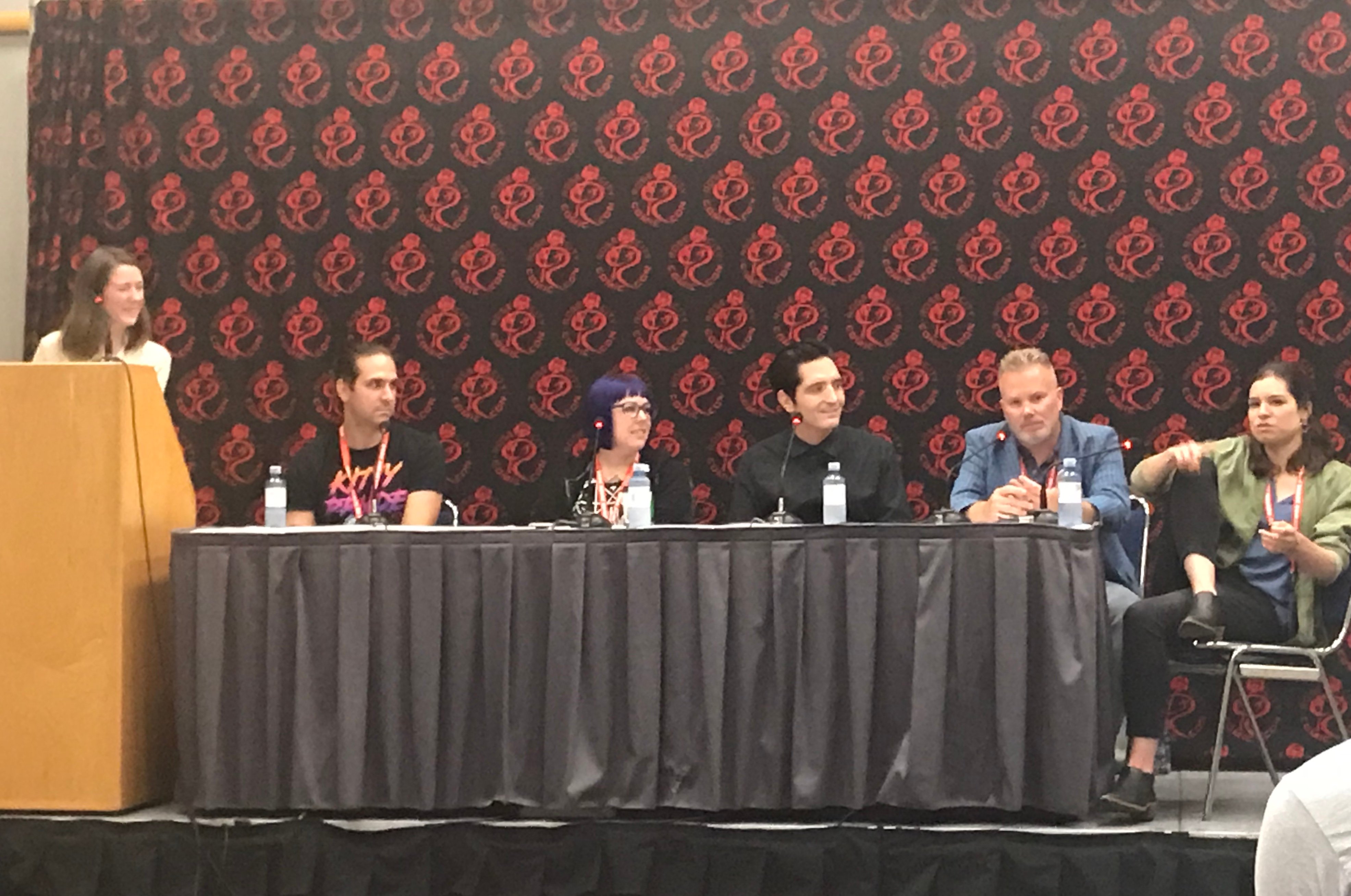
To start off, each creator talked about how they got into comics and their educational backgrounds. Dastmalchian, whose first comic (Count Crowley: Reluctant Midnight Monster Hunter) debuts in October, has been dreaming of creating comics for 30 years. Though he has long studied storytelling, and he is more familiar to audiences as an actor (Ant-Man, The Dark Knight).
Veronica and Andy Fish initially met through comics. Veronica was first exposed to art through her grandfather and she met Andy when they were working at an art museum. She said the first comic she ever purchased at a comic shop was Will Eisner‘s The Dreamer.
“I have a kind of weird, roundabout way of getting into comics,” Fitzpatrick said. She went to college in Florida, then moved to Japan to teach English for two years. From there, she applied to work for fellow colorist Jordie Bellaire and worked with Bellaire and Declan Shelvey, attending conventions and working on her coloring portfolio. Eventually, Bellaire “mama birded me out of the nest,” Fitzpatrick said. She got a portfolio review from Dave Stewart and shortly thereafter stepped into doing full-time coloring, not as an assistant, but on her own.
Sevy recounted his story from Friday’s panel about going to the Savannah School of Art and Design and once again reiterated his belief in comics education, even if that education is not formal. From there, the panel shifted to talking about collaborating with other creators.
“Andy and I started working together on pages when I was drawing Spider-Woman for Marvel,” Veronica said. At the time, she was also drawing for the roller derby comic SLAM! and she said the art suffered for it, although she felt like she couldn’t say no to working for Marvel. Andy came into the picture when she asked for help and he would do digital layers over art she didn’t like, helping her find the mistakes and correct them.
Now on Blackwood and Sabrina the Teenage Witch, Veronica and Andy work together on pencils. Veronica said she will start a drawing and then slide it over for Andy to work on, which has improved their collaborative process immensely.
Sevy said that when he works with other writers, learning how to develop a story takes time but eventually leads to a place where a writer will describe a scene and then set him free, so to speak. For example, when he was working on Tomb Raider with Mariko Tamaki, after a point, she would say, “On pages 14-15 they fight. Have fun, Phil.” From there, he would take over.
Dastmalchian studied playwrighting and then screenwriting, which is a collaborative process that is slightly different to creating comics. He said that getting paired with an editor for Count Crowley was really important to his process. “I had been eating the donuts for 30 years but didn’t really want to learn how the donuts were made,” he said, likening his reading of comics to enjoying a product without creating it.
“This year, the editor collaborating with me by understanding what I wanted to say and then helping me convey that properly to my artist … has been so incredible,” Dastmalchian said.
Fitzpatrick noted that although most comic creators work independently and communicate with each other primarily through e-mail, seeing each other at shows and being in constant conversation creates a familial vibe. She added that working with so many different collaborators has leveled up her work significantly.
When looking at her early work, Fitzpatrick said she often dislikes it, “because I can see how I’ve gotten better. … A lot of it, for me, is figuring out, ‘How do I up my storytelling game through coloring?’ … Having these collaborators make me a better artist.”
Working with others frequently leads to revisions, sometimes multiple sets; other times, deadlines aren’t met because of extenuating circumstances. Andy Fish said that the worst that happens is when someone on a team is late and the deadline doesn’t shift. “Everyone always blames the artist,” he said, but sometimes people get sick or emergencies happen and the comic still has to be sent to retailers by a certain day.
Sevy said that he encourages new creators to learn how to strictly adhere to deadlines. “There’s a certain amount of professionalism that you have to excel at in scheduling, in time management, in respecting other people’s work,” he said. Sometimes, it can’t be helped, but he said, “You have to understand, you have to do a certain number of pages in a certain number of days and if I miss my deadlines, I’m not going to get another job.”
It’s not just deadlines that dictate a creative relationship, however; it’s also communicating what needs to be on the page and how, including layouts. Sevy said that he tends to give really detailed scripts to artists; Dastmalchian said that as he’s learning about writing scripts, he’s learning to trust his artist to know what he wants to communicate and how to best lay it out on the page.
“Getting as specific as possible [with scripts] is really helpful,” Andy said. He said he prefers to get descriptive visuals, which Sevy agreed with for the projects where he’s drawing for another writer.
Diving into comic books, for Dastmalchian, started with discovering comics at a young age. “That form of storytelling has just always spoken to me,” he said. “The interesting and fascinating thing about my journey is that I have 16 long boxes full of comics that my wife and I are constantly trying to [store].” He said he bought books on how to draw comics for years, but could never quite get there on his own.
Then, as an adult, he sought treatment for depression and addiction and started differentiating between fictional monsters and real monsters, which all generated story ideas for him. He said he initially envisioned Count Crowley as a TV series; when a mutual friend with Mike Richardson heard the idea and introduced Dastmalchian to the team at Dark Horse, it was the tipping point that pushed him to finally start learning how to write and then writing a comic.
On the subject of creators the panelists would love to work with, Andy said he’s already working with them — Veronica and Evan Dorkin. Veronica said that there are lots of creators she’s a fan of who she wouldn’t necessarily want to work with, because she’d be afraid of messing that up. Fitzpatrick called out Chris Samnee and Michael Walsh. Sevy said to work with Brian K. Vaughan, he would “twist every arm I have.”
“I would love to somehow be privy to the creative process of Emil Ferris,” Dastmalchian said, though he noted that she typically writes and draws her own stories.
“I get to work with people I never thought I would get to work with, like people I admired growing up,” Fitzpatrick said. “And I get to paint for a living!” She said that even though being a colorist sometimes gets stressful and her therapist has even suggested doing another job, she loves it too much.
To wrap up “Peeling Back the Layers,” the panelists answered audience questions, including how to go about presenting portfolios at conventions and networking with other creators. Fitzpatrick said she reached out to creators frequently online to ask if she could try coloring their inked pages, which helped her make connections and establish a baseline for her portfolio where creators could literally see how her colors would look with their work.
Andy Fish also encouraged audiences to keep pushing, even if the rejection letters pile up — he said he received at least 400 before he finally got a project picked up.


